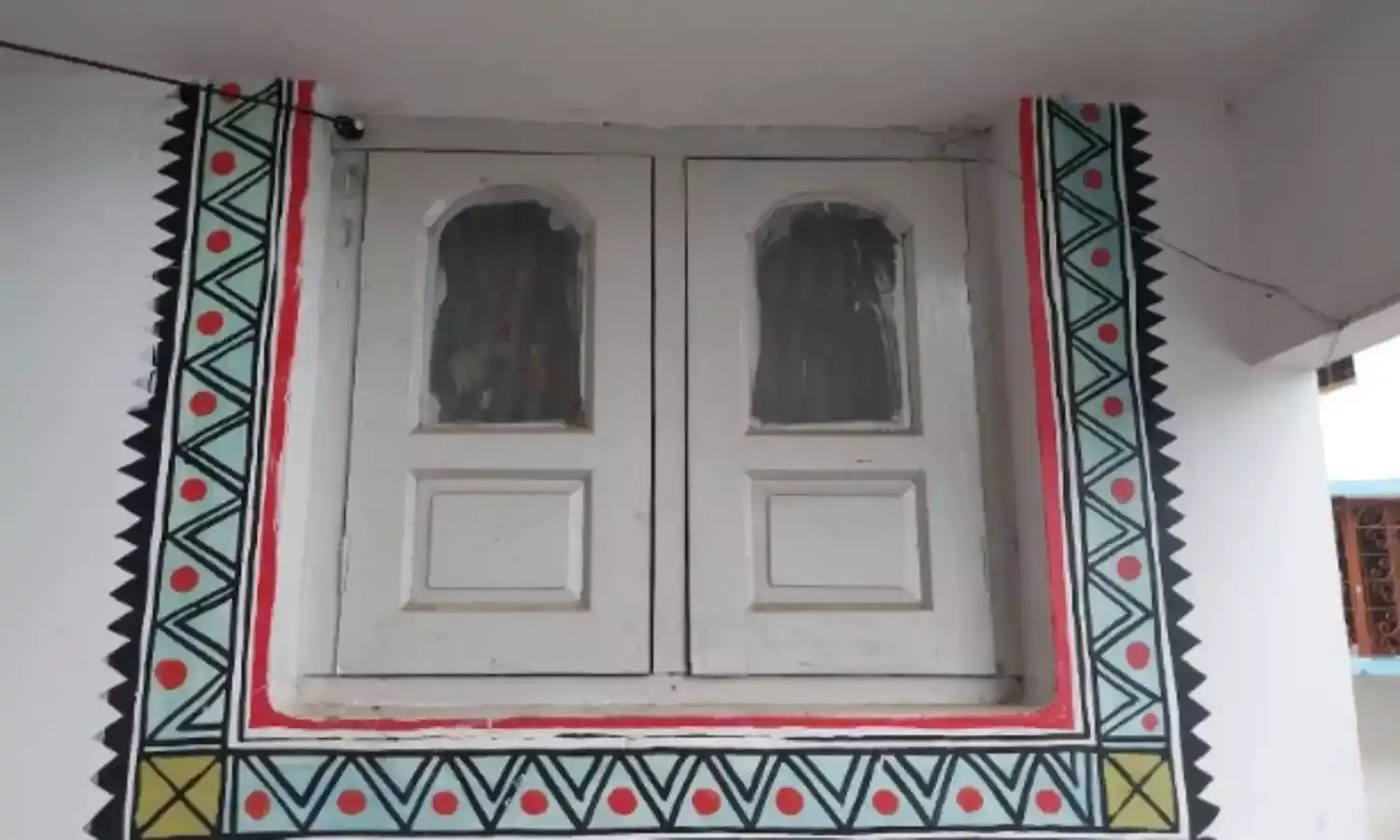Bhiti Chitra: An Art Form Moves From Walls to Canvas
‘People should not forget an old tradition even if modern education has its impact on almost everything’;

In the Kondagaon district of Bastar, Chhattisgarh, well known Bhiti Chitra painter Khem Vaishnav explains the word bhiti means walls – and chitra means picture – while heavy rains pour down in huge drops at times drowning out his voice.
This folk art has migrated from household walls to paper and canvas, and is inspired by folk tales and rituals, often from the Jagar tradition of Hindus. Many tales from Jagars find their way to walls, typically on Thursdays or in the monsoon season, to worship certain deities.
Many Bhiti Chitras show minute details of village life, with emphasis on the Mahua gathering season, an active time across Bastar.
Their borders, often detailed and attractive, are an important part of the art. Their human figures remind me of the style of Warli. These days, acrylics are preferred over natural colours like turmeric for shades of yellow, or mud or soil used for the browns.
“Coal is not used for black colour as it is not considered auspicious. But black acrylic is used for the border, with intricate lines on all four sides,” says Vaishnav.
“The border indicates the border of a typical village in Bastar,” he adds, filling in colours to enclose the four sides. Adivasi figures are also seen in the paintings, like his depiction of Anga Dev, a clan god of Bastar, highly revered.
Vaishnav’s house has Bhiti Chitra paintings on its walls done in acrylic, but these days he uses handmade paper for its colour grip.
The artist, who was present in Delhi last year to represent Chhattisgarh in the national capital, says folk art such as Bhiti Chitra is losing its flavour, and that people in Bastar are more or less ignoring it now.
“People should not forget an old tradition even if modern education has its impact on almost everything.”
He points out how some young people do not know the significance of the Maati tyohar or festival so popular in Bastar.
“My paintings depict the Mahua tree a lot as it has many uses in Bastar’s culture.” The flowers are collected, and even its seeds yield oil.
Bhiti chitra is inspired by Adivasi art forms but isn’t exclusively Adivasi in the sense that anyone can learn it. Vaishnav has practised it since he was 12, barring a gap of a few years when he was away from the art. He then continued it once again from 1977 onwards.
He was inspired to take up Bhiti Chitra by his mother, who would sing Jagars. The art has brought him recognition through exhibitions and Khem Vaishnav has travelled far and wide. Today, many of his students are taking the tradition forward.
Photographs DEEPANWITA GITA NIYOGI

